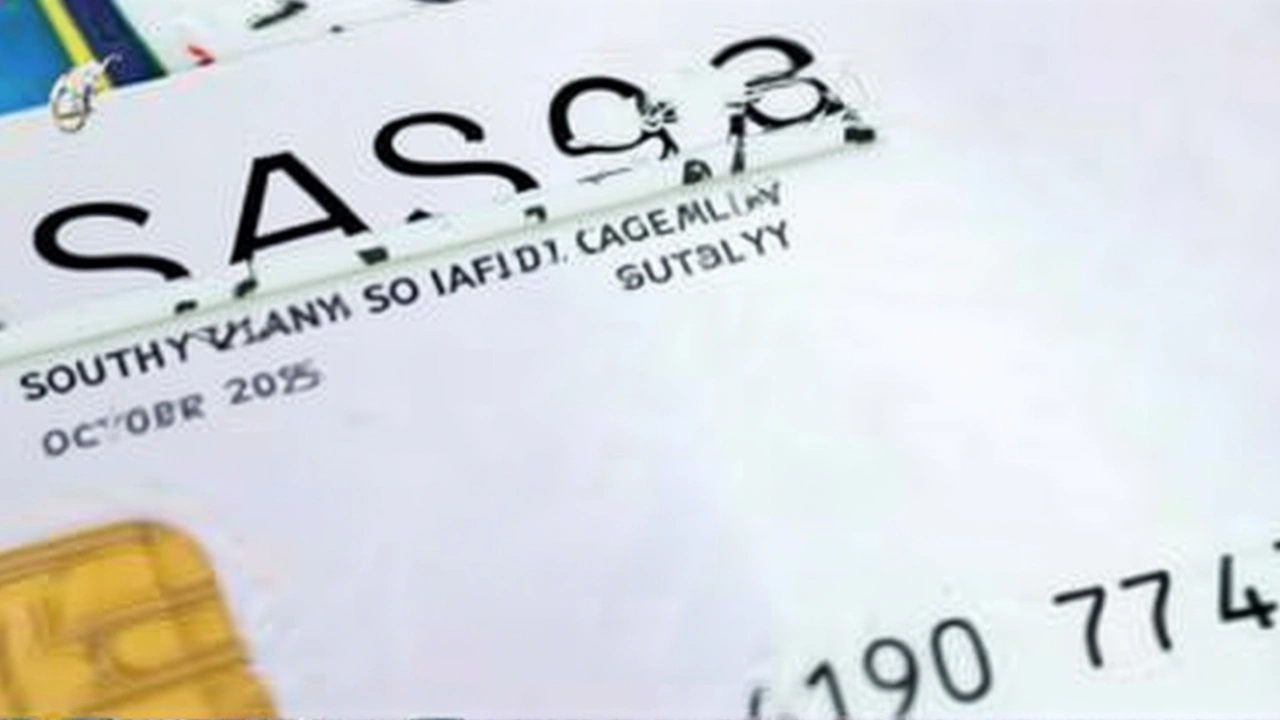The South African Social Security Agency (SASSA) announced on Tuesday, 1 September 2025 that its September grant payment schedule will roll out over three days, a move praised by Lindiwe Zulu, Minister of Social Development. The announcement was made in Johannesburg. The September 2025 SASSA grant payment scheduleSouth Africa will see old‑age pensions released on 2 September, disability grants on 3 September and child‑related grants on 4 September. With more than 19 million recipients, the timing matters for households already feeling the pinch of rising living costs.
Payment Schedule Overview
Beneficiaries can expect the following rollout:
- 2 September (Tuesday): Old Age Grant – R2 315 for ages 60‑74, R2 335 for ages 75+.
- 3 September (Wednesday): Disability and Care Dependency Grants – each R2 315.
- 4 September (Thursday): Child Support Grant – R560 per child, Foster Child Grant – R1 250 per child, Grant‑in‑Aid – R560.
Both direct deposits into bank accounts and cash withdrawals at retail outlets – Pick n Pay, Shoprite, Checkers, Boxer – and designated SASSA pay points will be available. The agency urged people not to crowd the first day; instead, they should withdraw what they need gradually or use their SASSA cards for purchases.
What’s New in Grant Amounts
The 2025 national budget introduced a R130 uplift for old‑age and disability grants and a R30 increase for child support grants. That means a senior receiving the R2 315 pension now gets an extra R130 – a modest cushion, but one that reflects the 9% inflation spike recorded in the first half of the year.
According to the Department of Social Development’s latest figures, roughly 6.4 million households rely on the old‑age pension as their primary income source. "Even a small boost can mean the difference between a month‑end food purchase and a skipped meal," said Ministry of Social Development analyst Thabo Mokoena.
How Beneficiaries Are Asked to Collect Funds
SASSA’s communication campaign emphasizes three simple steps:
- Check your bank account or SASSA card balance online the evening before the payment date.
- Plan a withdrawal amount that covers your immediate needs – no need to empty the account in one go.
- If you prefer cash, head to a nearby retail outlet early in the day to avoid queues.
"We’ve seen congestion at ATMs in the past when everyone rushed on the first day," noted a spokesperson from the agency. "Staggered collection reduces the risk of theft and eases pressure on our partners’ systems."

Reactions from Stakeholders
Retailers such as Pick n Pay welcomed the schedule, citing the ability to manage cash flows better. "Our branches are ready with extra staff and cash supplies," said Johan van der Merwe, Regional Manager at Pick n Pay. "We’ve also trained cashiers to accept SASSA cards, which should speed things up."
Community leaders, however, warn that the increased grant amounts may still fall short. "The cost of basic staples like maize meal and cooking oil has risen more than 12% since January," said Ntombizodwa Khumalo, a chairperson of a local women’s NGO in the Eastern Cape. "The extra R130 helps, but families still need supplementary support, especially during school holidays."
Implications for Households and the Economy
Economic analysts note that the 19 million grant recipients collectively inject roughly R40 billion into the economy each month. The timing of these payments often creates a short‑term boost in retail sales, especially in grocery and informal sectors. A modest delay or bottleneck can therefore ripple through small businesses.
"Staggered payouts smooth out demand spikes, which is better for inventory planning and reduces price gouging," explained Dr. Sipho Dlamini, senior economist at the University of Pretoria. "Over‑crowding at ATMs also raises operational costs for banks, which ultimately can affect service fees for everyone."
Looking Ahead: Future Adjustments and Advice
The Social Relief of Distress (SRD) grant, capped at R370, follows a separate schedule between 25 September and 29 September. SASSA reminded beneficiaries that funds stay in accounts until withdrawn, so there’s no penalty for waiting a few days.
To avoid disruption, the agency urged anyone who has moved or changed banking details to update their records via the SASSA portal or at a nearest pay point. "A simple data update now prevents a missed payment later," emphasized Minister Zulu during a press briefing.
Overall, the September schedule aims to balance prompt support with logistical practicality. If the staggered approach proves effective, SASSA may adopt it for other monthly disbursements, potentially reshaping how social grants interact with the broader South African economy.

Frequently Asked Questions
When will the old‑age pension be paid in September 2025?
The old‑age grant will be credited on Tuesday, 2 September 2025. Recipients can either check their bank accounts that evening or withdraw cash on the same day at any SASSA‑approved outlet.
What is the new amount for the disability grant?
The disability grant has been set at R2 315 per month, matching the increase given to old‑age pensions. This reflects the R130 uplift announced in the 2025 budget.
How can beneficiaries avoid long queues at ATMs?
SASSA advises people to withdraw only the cash they need for the day, use their SASSA cards for purchases, or simply let the funds sit in their bank accounts until they’re ready to spend. Early‑morning visits to retail outlets also tend to be less crowded.
What should I do if my bank details have changed?
Update your information on the SASSA online portal, or visit a nearby SASSA pay point with proof of the new account. Failing to update can delay future payments.
Why is the SRD grant paid on a different schedule?
The Social Relief of Distress grant targets households affected by temporary hardships and is therefore allocated later in the month (25‑29 September) to spread out cash flow and ensure the primary grants are processed first.



Shubham Abhang
October 1, 2025 AT 19:56Wow! Finally some decent uplift-hope it actually reaches us!!!
Trupti Jain
October 2, 2025 AT 12:36It’s refreshing to see the government actually nudging the old‑age pension upwards, even if the boost feels modest. The R130 increase translates to a little breathing room for many retirees who juggle medical bills and food costs. While the numbers look shiny on paper, the real test will be whether the disbursement runs smoothly across the three‑day window. Retail partners like Pick n Pay seem prepared, which should curb the dreaded ATM queues. Still, I can’t help but wonder if the child support uplift will keep pace with the soaring cost of basics.
deepika balodi
October 3, 2025 AT 05:16Staggered payouts should ease the ATM rush, and the extra R130 might stop a few meals from being skipped.
Priya Patil
October 3, 2025 AT 21:56Good move on spreading the dates-less crowding, more breathing room. The R560 child grant still feels tight against school fees, though. Hopefully families will use the extra R30 to buy essentials rather than just stretching every rand. Keep an eye on the retail outlets; they’ll be the real pulse of how this helps on the ground.
Sandhya Mohan
October 4, 2025 AT 14:36Money may not buy happiness, but timely cash does keep the hunger at bay. When the old‑age grant lands on the 2nd, it’s like a small sunrise for many households. The added R130 is a reminder that even tiny lights matter in a long night of inflation. Let’s hope the staggered approach becomes a habit, not just a one‑off experiment. In the end, it’s the consistency that builds trust.
Prakash Dwivedi
October 5, 2025 AT 07:16The uplift is a welcome cushion for seniors battling rising prices, yet the system’s efficiency remains the real concern. Queues at ATMs have historically turned stressful, so the three‑day rollout could lessen that strain. Beneficiaries should monitor their balances the night before to avoid unnecessary trips. Ultimately, the impact will be measured by fewer missed meals.
Rajbir Singh
October 5, 2025 AT 23:56Even a small raise helps, but the real issue is that many still can't cover basic groceries. The schedule looks organized, yet the bureaucracy could still cause delays. Keep the process transparent, and the people will notice.
Swetha Brungi
October 6, 2025 AT 16:36Seeing the government tweak the grant dates shows they listen to the congestion problems of previous months. A spaced‑out schedule means less pressure on bank tellers and more dignity for claimants. The R130 for seniors might not cover everything, but it’s a step toward acknowledging inflation. Communities should share tips on smart withdrawal planning to stretch every rand. Together, these small adjustments can ripple into bigger economic stability.
Govind Kumar
October 7, 2025 AT 09:16It is commendable that the Department of Social Development has instituted a phased disbursement schedule, thereby mitigating the risk of systemic overload. The augmentation of the old‑age pension by R130 reflects a measured response to prevailing inflationary pressures. Nevertheless, continuous monitoring will be essential to ensure that the logistical implementation aligns with the intended outcomes. Stakeholders are encouraged to provide feedback for subsequent refinements.
Rashi Jaiswal
October 8, 2025 AT 01:56Yay! Finally some extra cash, hope the shops dont jack up prices again.
Maneesh Rajput Thakur
October 8, 2025 AT 18:36While the uplift looks good on paper, remember that the CPI rose by more than 9% in just six months, so the real purchasing power gain is minimal. Also, the staggered dates could unintentionally shift spending spikes into the middle of the week, affecting small vendors. A better approach might be a single-day disbursement with extended ATM hours. Just saying, policy tweaks need data‑driven backing.
ONE AGRI
October 9, 2025 AT 11:16The government's decision to raise the old‑age and disability grants by R130, while seemingly generous, must be examined through the lens of macro‑economic reality. First, inflation in South Africa has been persistently high, with food price indices climbing over 12% since the start of the year, meaning that a modest uplift barely scratches the surface of what retirees actually need. Second, the three‑day disbursement schedule, though intended to reduce queue congestion, may simply redistribute the pressure from one day to the next, creating a series of micro‑peaks that can still overwhelm retail outlets and ATMs. Third, many beneficiaries rely on cash for daily transactions, and the limited number of cash points could still lead to bottlenecks, especially in rural areas where banking infrastructure is sparse. Fourth, the additional R30 for child support grants does little to counteract the soaring cost of schooling, uniforms, and nutrition supplements, which have risen in tandem with overall consumer prices. Fifth, the communication campaign urges people to “plan a withdrawal amount,” but without clear guidance on budgeting, many may still over‑withdraw and face security risks. Sixth, the emphasis on using SASSA cards for purchases is innovative, yet the acceptance network is still patchy, leaving many with only cash options. Seventh, while retailers like Pick n Pay have bolstered staff and cash supplies, smaller corner shops may not have the capacity to handle sudden influxes of cash, potentially leading to price gouging. Eighth, the timing of the SRD grant later in September could exacerbate cash flow mismatches for households already stretched thin by the earlier payouts. Ninth, the government's statement that “funds stay in accounts until withdrawn” assumes that beneficiaries have reliable internet or phone access to verify balances, which is not universally true. Tenth, the policy's success hinges on accurate beneficiary data; any errors in banking details could result in missed payments, defeating the purpose of the uplift. Eleventh, the broader economic impact of R40 billion monthly injection into the economy may be muted if consumers choose to save the extra cash rather than spend it, especially amid uncertainty. Twelfth, without complementary measures such as subsidies on essential goods, the grant increase may simply offset inflation without improving living standards. Thirteenth, the public’s trust in SASSA hinges on consistent and transparent implementation, and any perceived mishandling could erode confidence. Fourteenth, the three‑day rollout could serve as a pilot for future months, but only if rigorous monitoring and feedback loops are established. Fifteenth, in summary, while the raise is a positive step, it must be part of a holistic strategy that addresses price stability, accessibility, and comprehensive support for vulnerable households.
Himanshu Sanduja
October 10, 2025 AT 03:56Agreed that the data‑driven monitoring is essential; without it the policy risks becoming a token gesture.
Kiran Singh
October 10, 2025 AT 20:36Exactly, the staggered dates should help keep the lines short 😊
Balaji Srinivasan
October 11, 2025 AT 13:16True, retail outlet readiness will be the litmus test for how smooth the process feels on the ground.
Hariprasath P
October 12, 2025 AT 05:56i think the extra cash is good but i hope they fix the ATM problems soon. many people still cant get their money on time. let's see how it goes.
Vibhor Jain
October 12, 2025 AT 22:36Sure, because banking systems have never had any hiccups before.
Rashi Nirmaan
October 13, 2025 AT 15:16The amendment to the grant schedule warrants rigorous fiscal scrutiny.
Ashutosh Kumar Gupta
October 14, 2025 AT 07:56Such a monumental shift could redraw the very fabric of our socio‑economic landscape.
fatima blakemore
October 15, 2025 AT 00:36At the end of the day, timely support can nurture hope in the hearts of many.